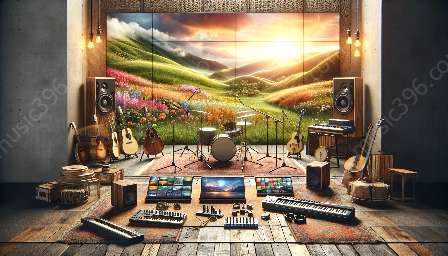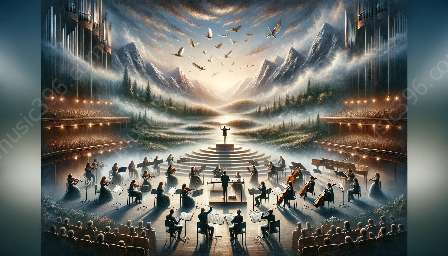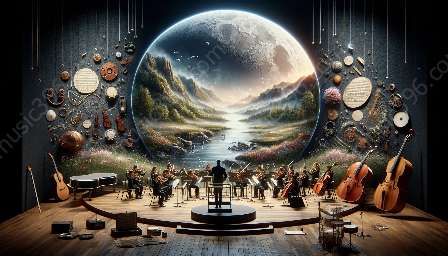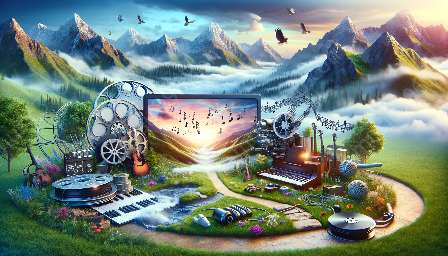Sound plays a crucial role in creating spatial audio experiences, deeply intertwined with sound studies and music. From immersive virtual reality environments to cutting-edge audio technologies, the harnessing of sound for spatial experiences is at the forefront of innovation in both the music and technological industries. In this comprehensive article, we will delve into the multifaceted dimensions of sound and its role in shaping spatial audio experiences.
The Intersection of Sound Studies and Spatial Audio
Sound studies is an interdisciplinary field that encompasses the study of sound in various contexts, including cultural, technological, historical, and artistic dimensions. When it comes to spatial audio experiences, sound studies provide a rich foundation for understanding the intricate relationship between sound and space. The field of sound studies offers valuable insights into the perceptual, psychological, and technological aspects of spatial sound.
Researchers and scholars in sound studies have delved into the historical and cultural significance of spatialized sound, examining how sound has been utilized in different contexts to create immersive and spatial auditory experiences. From the traditional use of sound in religious and ceremonial spaces to the modern deployment of sound in virtual and augmented reality environments, sound studies provide a comprehensive framework for understanding the evolving role of sound in spatial experiences.
Perception and Spatialization of Sound
Perception is a central theme in sound studies, and it is particularly relevant in the context of spatial audio experiences. The human auditory system is incredibly adept at interpreting spatial cues in sound, allowing us to perceive the location, distance, and movement of sound sources. This perceptual phenomenon forms the basis for spatialization, the process of creating a sense of spatial presence and dimensionality in audio content.
Advances in spatial audio technologies have leveraged our understanding of auditory perception to create compelling spatial audio experiences. Techniques such as binaural recording, ambisonics, and object-based audio have pushed the boundaries of traditional stereo playback, enabling listeners to experience sound in three dimensions. As a result, spatial audio has become an integral part of immersive media, including virtual reality, gaming, and 360-degree video content.
Music and Spatial Audio
Music, as an art form deeply rooted in the manipulation of sound, has a symbiotic relationship with spatial audio. The concept of space has always been integral to musical composition and performance, with composers and musicians utilizing spatial techniques to create engaging sonic experiences. Traditionally, the spatialization of sound in music was achieved through the positioning of performers and the strategic use of reverberant spaces.
With the advent of spatial audio technologies, the boundaries of musical spatialization have expanded exponentially. Musicians and producers now have access to tools and techniques that allow for precise control over the spatial aspects of music, blurring the lines between composition and spatial design. Spatial audio not only enhances the listening experience but also offers new creative possibilities for artists to craft immersive sonic narratives.
Creating Immersive Environments with Spatial Audio
The integration of spatial audio into immersive environments has redefined the way we experience audiovisual content. Whether in virtual reality simulations, augmented reality applications, or 3D audio concerts, spatial audio has the power to transport listeners into dynamic and enveloping sonic realms. This paradigm shift in audio-visual experiences has profound implications across various domains, including entertainment, education, and communication.
Sound designers and engineers play a pivotal role in crafting spatial audio experiences, drawing from their expertise in both sound studies and technological implementation. By leveraging spatial audio, these professionals can manipulate sound in ways that spatially engage and captivate audiences, heightening the overall immersive experience. The spatialization of sound adds an extra layer of depth and realism to audio content, effectively blurring the boundaries between the virtual and the physical world.
The Future of Spatial Audio
The advancements in spatial audio technologies continue to drive innovation in the fields of music, sound studies, and immersive media. As spatial audio becomes more accessible and refined, its impact on creative expression and audience engagement will only grow. The future holds promising developments in spatial audio, with potential applications ranging from interactive audio storytelling to spatially enhanced live performances.
Ultimately, the role of sound in creating spatial audio experiences extends beyond mere auditory perception. It encompasses a profound intertwining of art, technology, and human experience, shaping the way we perceive and interact with audio content in spatial dimensions. By understanding and embracing the pivotal role of sound in spatial audio, we pave the way for a new era of immersive sonic exploration and expression.









































